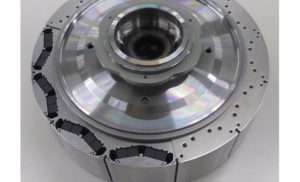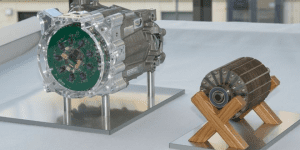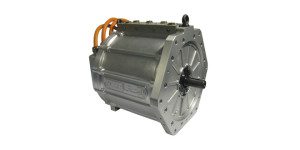The DOE Office of Fossil Energy has selected 13 projects to receive approximately $1.95 million in federal funding to develop conceptual designs for commercially viable technologies that will extract rare earth elements (REEs) from US coal and coal by-products. Each project will receive up to $150,000 in DOE funding. The conceptual designs will include system… Read more »
Search Results Found For: "rare earth"
DOE to provide $18 million for research on rare earth materials
The US Department of Energy (DOE) will provide up to $18 million for basic research to ensure the continued availability of rare earth elements. Neodymium, praseodymium, lanthanum and other rare earth materials are widely used in a variety of technological applications, including EV motors and wind turbines. The research will seek breakthroughs that increase the… Read more »
USA Rare Earth acquires permanent magnet manufacturing capability
USA Rare Earth has purchased the neodymium iron boron (NdFeB) permanent magnet manufacturing equipment formerly owned and operated in North Carolina by Hitachi Metals America. Demand for rare earth magnets is being driven by plug-in vehicles (electric motors and batteries), wind generators (direct drive generators), medical devices (personal vital sign monitors and medical imaging machines)… Read more »
Toyota develops new magnet cutting the use of rare earth element neodymium in electric motors
Scientists at Toyota have developed a new heat-resistant magnet that uses “significantly less” neodymium, a rare earth element commonly used in magnets for electric motors. Neodymium is critical for maintaining magnetization at high temperatures. The amount of neodymium in Toyota’s magnets has been reduced by up to 50 percent, partially replaced with lower-priced rare earths… Read more »
A closer look at rare earth permanent magnets
Rare earth magnets have gotten a lot of coverage in the EV press over the years for being expensive – especially back in 2011 when a supply disruption in China sent the prices up anywhere from fivefold for neodymium to 20-fold for dysprosium over the course of a few months – yet they are still… Read more »
Mkango is developing new rare earth alloys for 3D-printed magnets
Canada-based Mkango Resources has teamed with UK-based Metalysis to develop and commercialize novel rare earth metal alloys for use in 3D-printed permanent magnets. The two companies envisage a comprehensive R&D program, taking advantage of Mkango’s knowledge about the performance characteristics and demand outlook for rare earth magnets and Metalysis’s solid-state process, which it says can… Read more »
Rare earth element-free motor debuts in Honda Freed
Honda was an early electrification innovator, but the disappointing career of its Insight Hybrid apparently killed the company’s interest in electrons. However, there are signs of a turnaround – the hybrid version of Honda’s Odyssey minivan, launched in Japan in February, now accounts for 70% of Odyssey sales. Now Nikkei Asian Review reports that Honda… Read more »
New process recycles rare earth element from scrap magnets
Rare earth elements, prized for their magnetic properties, are used in a wide range of modern technology, including advanced electric motors. Unfortunately, they are expensive, and some are available only from problematic parts of the world. To make it easier to recover and recycle rare earth minerals, the DOE’s Critical Materials Institute (CMI) has developed… Read more »
MotorBrain to debut integrated EV drivetrain with no rare earth metals
Four years ago, researchers from nine European countries launched the MotorBrain project, which aimed to develop an EV drivetrain that didn’t need costly rare earth metals in the motor. Now they’re ready to present a prototype of a fully-integrated drivetrain with a rare-earth-free permanent magnet synchronous motor at this year’s CWIEME Berlin exhibition. “Rare earth metals… Read more »
Next-generation switched reluctance motor uses no rare earth elements
Ricardo has developed a new prototype 85 kW synchronous reluctance motor designed for EV applications. Most EV motors use permanent magnets made from materials such as neodymium-iron-boron and samarium-cobalt. However, the rare earth elements in these compounds can be expensive and problematic to obtain. Switched reluctance motors, which do not use permanent magnets, show great… Read more »













